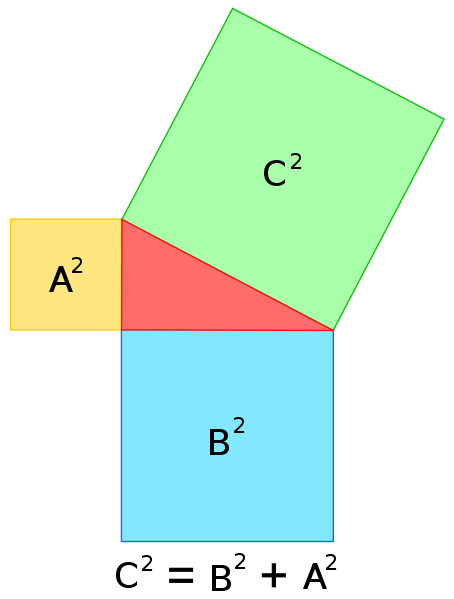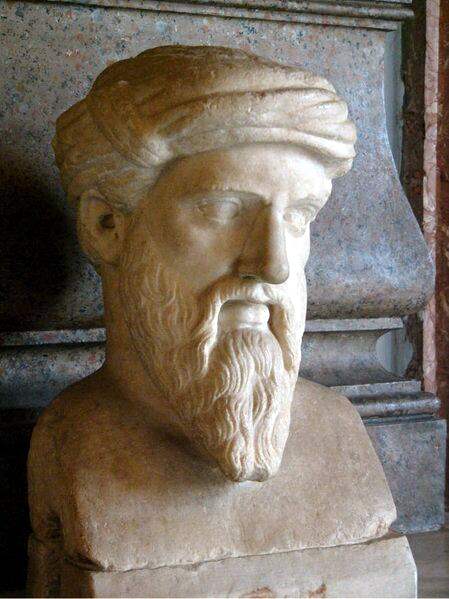Posts Tagged ‘math’
Pythagoras and his theorem
Posted on: October 12, 2009
- In: Science
- 4 Comments
Numbers are all around us. They’re in the food we eat – “4 table spoons of sugar, 250g of butter, etc.” They’re on our television screens – the TV show Numb3rs is about a mathematical genius, Charlie Eppes who helps his brother, FBI Special Agent Don Eppes, solve cases using numbers. They’re in Pop music too, without numbers, we wouldn’t have our top 100 hits charts, and artists wouldn’t be able to get their songs to No.1.
And not to mention telephone numbers. Without numbers, maybe telephones and mobiles phones will use pictures to identify a person? – “Oh sorry, I called you by mistake; I wanted to call your twin, so sorry.” But a part of what makes numbers so very important is our age. Without numbers, we wouldn’t know when we were born, or how old we are.
Now another good thing about numbers (or a bad thing about numbers depending on you) is math. Math, like numbers, is terribly useful and can be used to find the areas of triangles and other important things like that.
If you have studied math before, no doubt you would have heard of the Pythagorean Theorem. Which is the formula for finding the area of a right angled triangle: a² + b² = c². What that means, is a², or the height of the triangle, multiplied by b², the base of the triangle, equals c², the hypotenuse of the triangle. See the diagram below for a clearer view.

Pythagoras' Theorem
This mathematical formula is a priceless and significant part of math as we know it today. So who could have been so clever to think up this formula? None other than a man called Pythagoras.
Pythagoras and math
Pythagoras (c. 570 BC – c. 495 BC) was a Greek mathematician, musician, philosopher and scientist. He was a significant part of the development of math, yet not much is known about him as none of his writing has survived. Though he didn’t leave behind any great writings, he left behind a way of life. His disciples called themselves the Pythagoreans.
The Pythagoreans were a select and secretive group and were divided into two groups merely on the base of their interest. One of them were called the akousmatikoi (“listeners”), who were focused more on the religious side of Pythagoras’ teachings, and the other were the mathēmatikoi (“learners”) who were focused more on of the scientific and mathematical side of Pythagoras’ teachings.

A bust of Pythagoras himself.
Nonetheless, the Pythagoreans in general adored numbers, and believed them to be the building blocks of life. They believed that each number had their own personality, and that the explanation for something existing could be explained through numbers.
But becoming a disciple of Pythagoras the man supposedly “sent from the gods”, was a very long process. The applicant’s charter, habits, feelings, words, actions and their way of life in general would be examined by Pythagoras himself, and only if they passed successfully would they be accepted into his school.
If they succeeded, they would then have to give all their property to the school, as everything was held in common. Then, for the next three years, they would have no vote in proceedings, and no medical treatment. And after that, they were required by the school to observe silence for five years, with the aim of training them to tame themselves, first to listen and then to attain wisdom.
If after those long eight years or so the pupil was considered unsuitable, he would be expelled and all his property returned. But, despite the risk of being expelled after all the hard work put in, many people from all over the region flocked to Pythagoras’ school, with hopes of learning from the great master himself.

Pythagoras is the bald one in the middle. He is teaching his disciples music.
Pythagoras and music
Pythagoras not only discovered his famous theorem, but he also discovered the overtone series, which is what you hear on a modern piano today.
It is said that one day Pythagoras was passing by a blacksmiths workshop and he noticed the various harmonies coming from the blacksmiths shop. Later, he went back to investigate, and found that the different tones that came from the blacksmiths hammer when it hit the metal changed according to the weight of his anvil.
Pythagoras was intrigued. He experimented and found that by plucking a string one foot long it vibrates x times per second, and by plucking another piece of string two feet long, it vibrates 2x per second, but at the same pitch. Thus, plucking both strings simultaneously or one after the other, creates an octave.
After further experimenting, Pythagoras found that by dividing one of the strings into halves, thirds, quarters, or fifths of the original length while keeping the other string the same length and then plucking in a similar fashion created an octave, a perfect fifth, and a major third respectively. To hear the differences click here.
This discovery was very important to Pythagoras, for he realised that these tones played musically and in the right sequence on an instrument could change the behaviour patterns of a person and accelerate the healing process.
Pythagoras’ discovery of music prompted the opening of a Pythagoras Graduate School of Music and Sound Research in Finland, and focuses more on the academic side of music and less on the performance side. Their main research fields are:
- Musical acoustics and sound processing
- brain research
- music theory
- psychology of music
- media design
Pythagoras’ significant discovery lent further proof to the belief of the Pythagoreans: that everything, including music, was fundamentally made out of their beloved numbers.